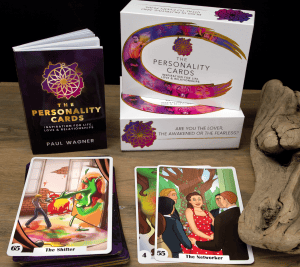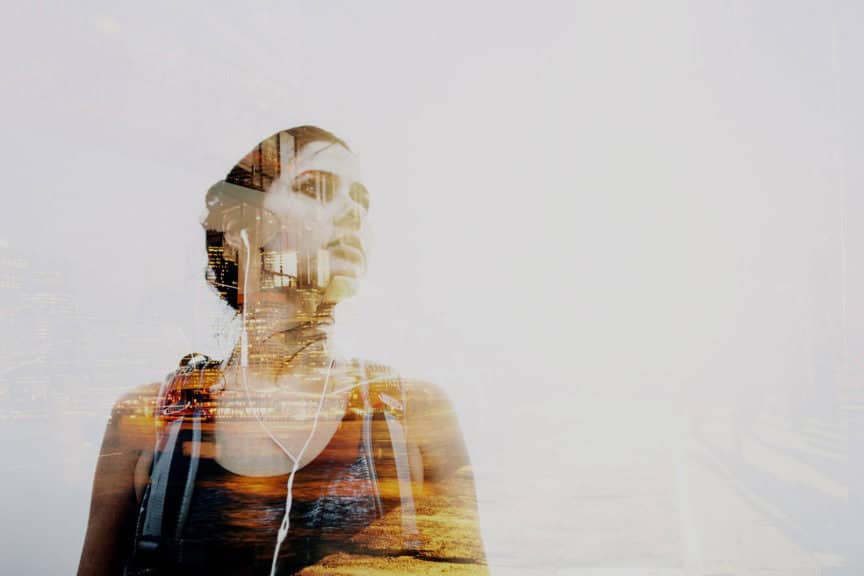
Swiss psychiatrist Carl Jung, originally Sigmund Freud’s follower, developed the idea of archetypes and the analytical psychology approach and expanded on the idea that the unconscious is vital in behavior and personality, not just the personal unconscious but also the collective unconscious. He believed that the body, mind, and soul, or the human psyche, are made up of three parts. These Carl Jung archetypes are:
- Collective unconscious: Archetypes
- Ego: represents the conscious mind
- Personal unconscious: Memories (even the suppressed ones)
What’s the difference between the collective and personal unconscious? The personal unconscious is unique to each individual, whereas the collective unconscious contains all the memories that the whole of humanity shares.
Carl Jung believed we inherited different parts of our biological, fundamental, and unconscious aspects from our ancestors. The archetypes reflect what’s left of our joys, sorrows, fate, and psychology that are repeated over and over throughout history. Jung believes this collective unconscious contains all of the experiences and knowledge that our species as a human shares. It also goes against the idea of the ancient Greek concept of tabula rasa, which believes that the human mind is a blank slate at birth that’s only filled with experience.
These archetypes develop a basis for how we experience life and can symbolize fundamental human values, personalities, ambitions, beliefs, morals, and motivations. Jung felt that even though each archetype played a crucial role in our personalities, most people came into the world with a specific dominant archetype.
How archetypes are expressed also depends on our unique experiences and cultural influences, from art to literature and religion. Although there could be an unlimited amount of archetypes in existence, Carl Jung identifies four major archetypes with a suggestion of two different personality centers.
Carl Jung’s Four Major Archetypes
The four main archetypes identified by Carl Jung represent the union of the conscious and unconscious. These archetypes are the Self, the Persona, the Animus or Anima, and the Shadow. Here is a detailed analysis of these archetypes.
1) The Persona Archetype
A derivation from a Latin word meaning mask, this archetype defines how we present ourselves to others; socially, it shows the different masks we wear when with our families, when at work, and when out with friends, to name a few. Based on our upbringing, the environment we are in, and our culture, our Persona archetype takes different forms. It reflects our adaptation to our surroundings; we can protect ourselves or fit in depending on the groups and situations and protect the ego from negative images.
The Persona archetype, according to Jung, takes different forms and may appear in dreams. This figurative social mask keeps one in check and ensures that they contain socially unacceptable impulses, emotions, and primitive urges. For instance, children, from a young age, are taught that to fit societal norms and expectations, they have to behave and act in a certain way. The downside to the Persona archetype is that it can lead one to lose their true self as one tries to keep up with everyone else’s expectations and norms.
2) The Shadow Archetype
In the Shadow archetype, humans have two sides: the dark and the light. While we want to show our light side, we choose to suppress the dark side, which becomes our shadow. Contained in the unconscious mind are personality aspects we are unaware of and those we don’t like. We can only realize through automatic responses; they arise without warning, more like reflexes.
The Shadow archetype has our weaknesses, desires, repressed ideas, shortcomings, biases, prejudices, and instincts. This archetype represents chaos, wildness, and the unknown and is often referred to as the darker side of the psyche. It forms when we attempt to build our Persona and adapt to societal norms; all the things unacceptable to society and one’s morals form the shadow. Some things we repress and are found in the shadow include hate, envy, greed, and aggression.
According to Jung, the Shadow archetype, just like the Persona, can appear in dreams and may take various forms. It can also appear in visions and may appear as some dark, exotic, or wild figure like a demon, snake, or even a dragon, to name a few. We all have this side and often project it onto others as we deny it ourselves.
3) The Animus or Anima Archetype
Anima is a woman, representing the femininity or feminine image in a man’s psyche. At the same time, the animus is a man and a representation of the masculine image or masculinity in a woman’s psyche. A combination of the animus and anima is referred to as the divine couple or syzygy and represents wholeness, unification, and completion.
How we perceive the world results from what we experience, our way of life, and how we are brought up. According to Jung, these three teach us what an ideal person should be like. He also believed that gender identities and the development of sex roles resulted from social influence and physiological changes. The encouragement in many cultures to adopt the traditional gender roles among men and women and exercise rigidity to anything contrary has undermined psychological development.
The personal unconscious has experiences with brothers, husbands, and boyfriends that contribute to a man’s image. In contrast, the collective unconscious contains information and notions on how men are supposed to behave, and the same applies to women. This Jungian archetype represents not what we present to others but who we are and acts as a principal source of communication with the personal and collective unconscious.
4) The Self Archetype
The Self archetype is a result of merging the unconscious and conscious states with the ego. Here, you cannot find two similar personalities; everyone is unique, and their unique experiences in life help shape their individuality. The Self archetype is often referred to as a mandala, square, or circle.

Other Jungian Archetypes
The Jungian archetypes are not only limited to the four that have been mentioned above. There is no fixed number of archetypes in existence. These archetypes can combine, overlap, and intermingle to form more archetypes. According to Jung, the four main archetypes can combine to give rise to the following 12 archetypal images or figures.
- Explorer
- Rebel
- Hero
- Wizard
- Lover
- Caregiver
- Sage
- Innocent
- Jester
- Creator/artist
- Everyman
- Ruler
These 12 archetypal figures can be divided into four depending on their orientation and what they seek to realize. The ego type wants to impact the world and leave a mark; the freedom type desires paradise; the social type seeks to connect with other people; the order type yearns to provide or create structure in the world.
Paul Wagner’s Personality Cards: An Extension of Carl Jung
Each person is unique; there is no replica of you anywhere else in the world, even with the belief that you have almost seven replicas. That being said, we all cannot identify with these 12 archetypal figures. The personality cards by Paul Wagner have 78 personality cards that aim at inspiring people divinely in relationships, life, and matters of love.
These cards help one not only discover their personalities but also act as a guide to help people navigate issues like forgiveness and other situations. Each card has a symbolic image that is unique to a person. These personality cards are an extension of Carl Jungian archetypes, including archetypes such as the Heart Collector, the Innocent Rascal, the Contradictor, or the Comedian.
A look into these personality cards will help you discover yourself and how to navigate your relationships with others. The messages at the back of the card give a simple reading into the personality the card identifies with. Which ones resonate most with you?
Meet Paul Wagner
Paul Wagner is an Intuitive Life & Business Coach, clairvoyant reader, and a five-time EMMY Award-winning writer. He created “THE PERSONALITY CARDS,” a powerful Oracle-Tarot deck that’s helpful in life, love, and relationships. Paul studied with Lakota elders in the Pecos Wilderness, who nurtured his empathic abilities and taught him the sacred rituals. He has lived at ashrams with enlightened masters, including Amma, the Hugging Saint, for whom he’s delivered keynotes at Her worldwide events.
Paul tours the world lecturing on spiritual liberation. He lovingly offers intuitive readings, inspirational coaching, and illuminating courses to help others with self-discovery, decision-making, healing, and forgiveness. Book a session with Paul: HERE.




